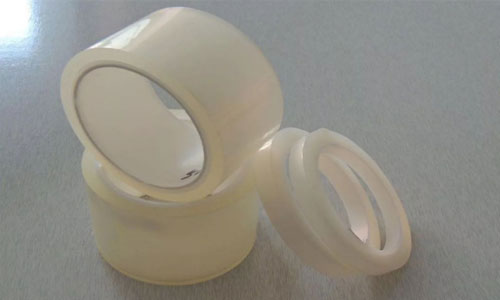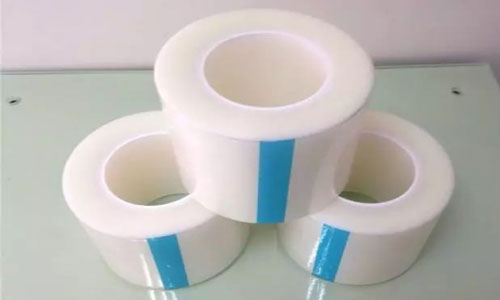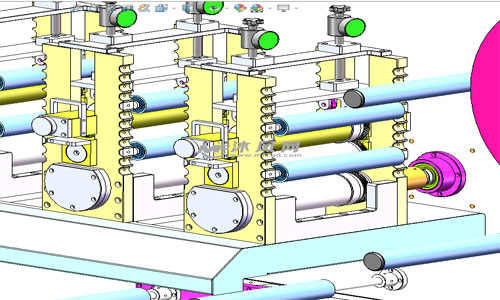OPP protective film is a type of plastic film that is based on oriented polypropylene (OPP) and coated with acrylic adhesive on one side. It is then applied onto a release liner, forming a plastic film.
It is primarily used for surface protection during product transportation, as well as for die cutting and transfer protection of various metals, films, and tapes. It is also used for protection of plastic components like casings and keyboards.
Classification of OPP Protective Film

OPP protective film includes computer screen protectors, laptop screen protectors, notebook keyboard protectors, display protectors, ultrasonic protectors, PE protectors, and more.
Characteristics of OPP Protective Film
OPP protective film has a smooth and transparent surface, high temperature resistance, and excellent weather resistance. It is a crucial material for flexible packaging. It is colorless, odorless, and non-toxic, with high tensile strength, impact resistance, rigidity, strength, toughness, and good transparency. The surface of OPP protective film has low energy, so corona treatment is recommended before coating or printing.
After corona treatment, OPP film has good printing adaptability and can achieve a beautiful appearance with color printing. Therefore, it is commonly used as a surface material for composite films. It is available in thicknesses of 5C, 6C, 7C, with low, medium, and high viscosities customizable.

Die Cutting Process for OPP Protective Film
1. Prepare the machine and first conduct tests on the appearance of the upper process, printing, and laminating of the OPP protective film. Test the hardness and flatness of the OPP protective film to see if it meets the cutting requirements.
2. Gain a full understanding of the status and performance of the die cutting equipment to be used, and inspect the main operating components and electrical control parts of the equipment. Adjust the blades on the OPP protective film according to the user's specifications and start production following the normal production process.
Issues to Note in die cutting machine Operation
The normal operation of the die cutting machine is the basis for ensuring production quality. Due to prolonged high-speed operation, the operating accuracy of some important key components of the die cutting machine may decrease, making it difficult to cut small-sized film rolls and thus compromising the cutting accuracy. As composite films are polymer products and have thin thickness, they are prone to damage during processing. Therefore, when the cutting precision is insufficient, quality issues such as longitudinal stripes can easily occur on the film. These issues have been observed and studied over many years, confirming that the main quality problem in the cutting process is the generation of longitudinal stripes, which must be addressed.
During normal production, the speed of the die cutting machine should strictly follow the technical requirements. Excessive speed can also affect cutting quality. Therefore, by controlling the cutting speed, the required quality can be achieved. In order to improve production efficiency and economic benefits, some operators artificially increase the cutting speed, resulting in the appearance of longitudinal stripes and staggered layer quality issues during high-speed operation of the film.
Therefore, in normal production, appropriate cutting processes should be adopted based on equipment performance, film internal performance, and different models and specifications of the film. As different films have different process parameters, identification methods, and values, careful adjustments must be made for each product. In production, the usage frequency and degree of wear of each station of the slitting machine may differ, resulting in some performance differences. For example, well-maintained cutting stations result in fewer longitudinal stripes, while the opposite is true for stations with more longitudinal stripes. Therefore, each operator must pay attention to the correct selection of working positions, fully utilize the equipment's optimal state, understand the on-site usage conditions, continuously sum up experiences, and find the best methods for operating the equipment.

Furthermore, during the cutting process, each roll of film should be opened and rewound again, creating conditions for foreign objects to enter. Since the film products are mainly used for food and pharmaceutical packaging, strict hygiene requirements must be met for cleaning each roll of film.
Only by using high-quality circular knife die cutting machine equipment can more problems be avoided during operation. A good machine saves time, labor, and materials. If you are still undecided about which machine to choose or have related questions that need solving, please feel free to contact Xiao Niu for the most attentive service.
Contact: Pamela
Phone: +86 189 6365 3253
E-mail: info@industryprocess.com
Whatsapp:+86 189 6365 3253
Add: Yajing Industrial Park, No. 59 Shuangjing Street, Weiting Town, Suzhou Industrial Park
We chat
